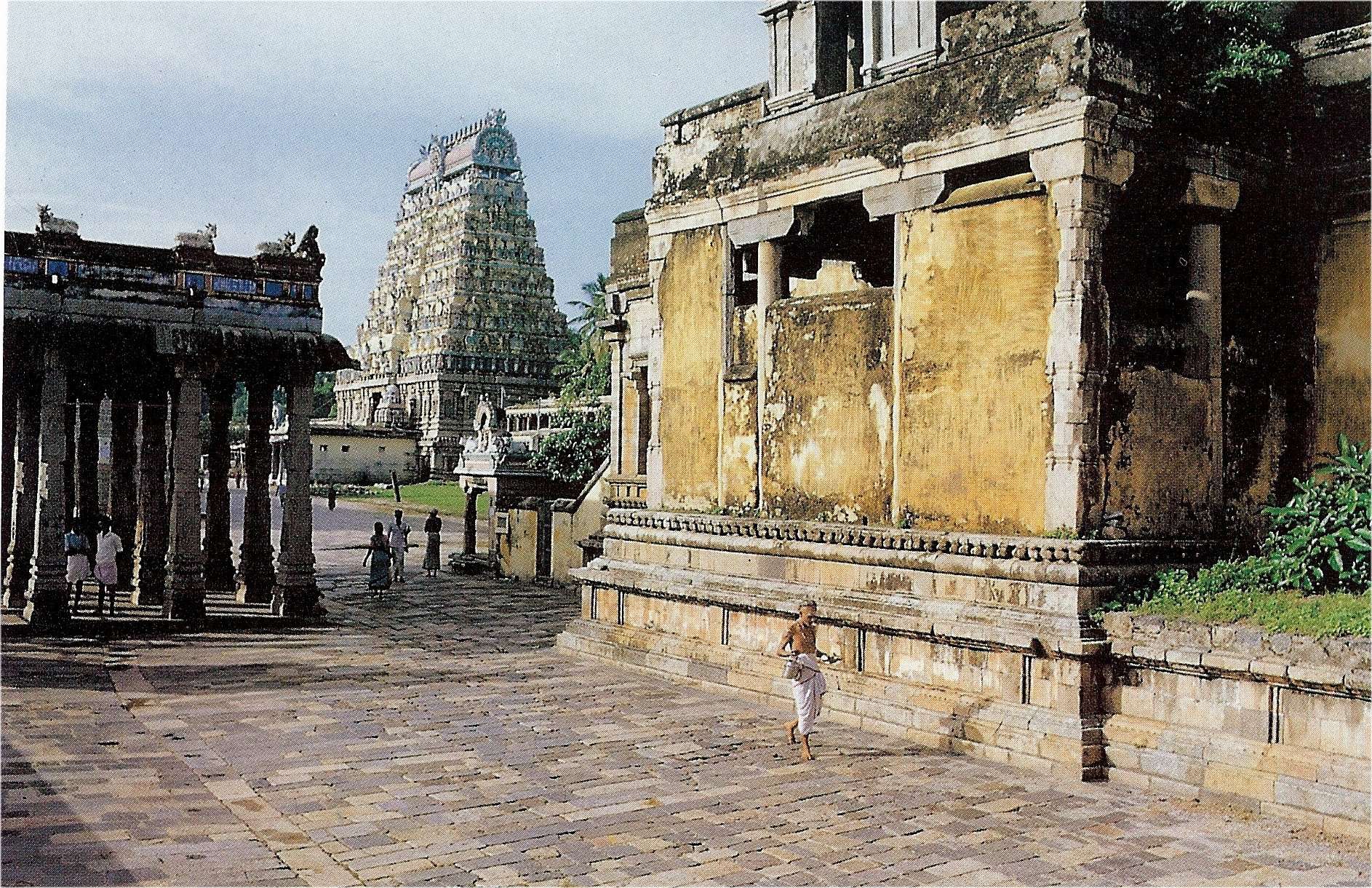Namaste
I was going through my book storage the other day, and I found this nice photo article I kept on the Chidambaram Temple, which has a lot of photos of which a few of them I thought I would share (see below) since you are not going to find these photos on the internet, all from 1993.
I have not been to Chidambaram Temple, but it is definitely on my list of travels, hopefully soon.
Here is an architectural diagram of the temple grounds, this is the location of the famous Nataraj deity and is located about 235 kilometers south of Madras (Chennai) on the Eastern part of Tamil Nadu:
http://imageshack.us/a/img827/1294/c...tarajtempl.jpg
Actually, the article has a lot of photos, but I can only share five photos total in a posting, so I selectively chose the diagram (above) as a link to the diagram, and five very interesting photos that have views, but more interesting also are some of the art panels found in the temple complex.
Chidambaram has always been the center for the worship of Nataraj, also known as Sabhanayaka or Lord of the Sabha going back to the olden times. This site has been important since the Pallava time, even before that actually.
In Tamil Nadu, a temple is called koyil.
The site has other names, such as Tillai since here was first a forest of tillai trees (Excoecaria agallocha). It has also been known as Pulliyur or the place of the tiger-footed Vyaghrapada. This is a mystical sage from long, long ago in ancient India, this Rishi would pick flowers untouched even by honeybees to offer Nataraj but because his feet would be often pricked by thorns of the area, Lord Shiva gave him the feet of tigers.
“Chirrambalam” means “little hall”. Shiva danced here to celebrate his victory over ritualistic minded ascetics. You will see images of the “four Tamil saints” in locations of the temple complex, who composed hymns of rapture upon seeing the dance of Shiva. In fact, some of the hymns which come from the Tevaram are sung by laymen during the “sayan kalam” or second prayers of the evening.
Singing is an established feature of this temple since the time of the Chola King Rajaraja the 1st, even before that. The 63 Nayanmars or Shaiva Saints who are commemorated in the “Periya Puranam” have their images set out in one long row against the North Wall of the second prakara or corridor.
To the Chola Kings, Nataraj was their family deity or kulanayaka, and many Kings have been crowned in Chidambaram.
The gopuras or gates to the complex are very elaborate. Some aspects of the temple had to be restored after the Delhi armies caused destruction.
Here is the location of the “akasha” Lingam (space). The formless Linga is in the Chit Sabha beside the image of Lord Nataraj.
The four gopuras are each 42 metres high. The largest building is known as the Raja Sabha or also known as the “Thousand-Pillared Hall”.
Here is a view of the Nataraj Temple showing the Shivaganga Tank and the North Gopura:
Here we see the Nataraj Temple looking towards the West Gopura:
As part of worship, there is a form of Shiva here as Shiva’s Sandals or padukas. These are golden, in the past it is believed there were ivory ones. In the morning, the padukas are escorted by palanquin to the Chit Sabha, the house or Sabha where within wooden walls and wooden pillars and copper-plated doors is found the Mukhalinga or the Linga of Brahma’s chopped off head, paraded with the sounds of reed horns and drums.
There is also a crystal Lingam found here, and a ruby Nataraja 15 centimetres high. A camphor puja lamp is specially used to shine the light of the flame through the ruby. Yantra is also worshipped called Shri Chakra with nine interlaced triangles with Nataraj and Shivakamasundari living in it. Shivakamasundari is the beautiful Green Goddess who is partnered with Lord Nataraj and a manifestation of Uma. I am particular to all manifestations of the green-complexioned Devi, this is another reason my dream is one day to go to this temple.
It is said all the Devas come here to worship.
Here is a photo of the beautiful pillared entrance to the Shivakamasundari Shrine of the Nataraj Temple:
Here is one of the many roof panels, in this case in the Shivakamasundari Temple (painted ceiling panel) depicting the story of Bhikshatana or the “mendicant” form of Shiva:
Lord Shiva is also of a manifestation of a bhikshu, or mendicant, who wanders about for alms like a beggar. This is also considered an aspect of Bhairava, and Lord Shiva took to the practice of Bhikshu after he cut off Lord Brahma’s fifth head. Here He is considered a Kapali Bhikshu, carrying Brahma’s Skullcap or Kapala as His begging bowl. I am particularly attracted to this form of Lord Shiva. Upon reaching His own City Never Foresaken by Shiva, known as Varanasi Kashi, He completed His example of Bhikshu. We must honor and respect the true bhikshus.
And here is a beauty! Painted ceiling panels illustrating Kamasundari’s story from the Shivakamasundari Shrine of the Nataraj Temple:
Kamasundari took the form a Kamakshi in order to get Shiva to notice Her while he was meditating. She then took the bow and arrows of Lord Kama Dev. She approached Shiva thus adorned.
Upon seeing Her, Shiva’s love was true. So She was to be known as Shivakamasundari. The Lord is seen as Nataraj, the Lord of Dance in this case, who Resides in Chidambaram with His Goddess Shivakamasundari.
The story and meaning of this dance, and what each sacred possession He holds in His hands as Nataraj is a long explanation for another time.
Om Namah Sivaya










 Reply With Quote
Reply With Quote
Bookmarks